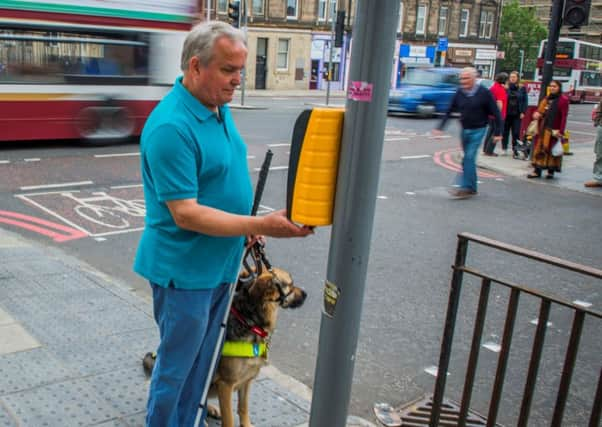Blind man negotiates obstacles on Leith Walk in new video to highlight the hazards


Alan Dudley is one of three subjects of a social media video produced by the charity RNIB, which shows him negotiating obstacles on Leith Walk in the capital with his guide dog Gemma.
The 67-year-old said: “Leith Walk always has been a difficult place because of the amount of traffic and pedestrians that are there.
Advertisement
Hide AdAdvertisement
Hide Ad“I think over the last five, ten years or so, traffic has become much heavier, and I think it’s a little more scary these days with street furniture and crowds of people.
“So, one has to be very, very careful when you’re walking about and try to be aware of what’s happening around you.”
RNIB has made the ‘How I See’ video with Alan and two other people with sight loss, Elise Crayton from Kingston and Pardy Gill from Leicester.
The campaign follows a call by the Department of Transport to local authorities in England and Wales to halt development of ‘shared spaces’ schemes. Under these, pavements and kerbs are levelled so people and vehicles all use the same surface.
Advertisement
Hide AdAdvertisement
Hide AdJames Adams, director of RNIB Scotland, is urging the Scottish Government to follow suit. Transport and urban planning is devolved to Holyrood.
“People like Alan who are blind or partially sighted face real danger if they no longer have a distinct pedestrian zone separating them from traffic,” Mr Adams said. “White canes and guide-dog users rely on kerbs to give them vital tactile cues for their safety. Where shared spaces already exist, people with sight loss have said they feel much less confident using them.”
“Introducing new design features that end up creating no-go zones for residents and visitors with disabilities would be a major step backwards for our towns and cities. We want all public spaces to have inclusive crossings and kerbs and tactile markings.
“Current shared space design fails to properly address the needs of people with sight loss, so we are calling on the Scottish Government to follow the Department for Transport’s decision to pause shared space schemes.”
Over 170,000 people currently live with a significant level of sight loss in Scotland.